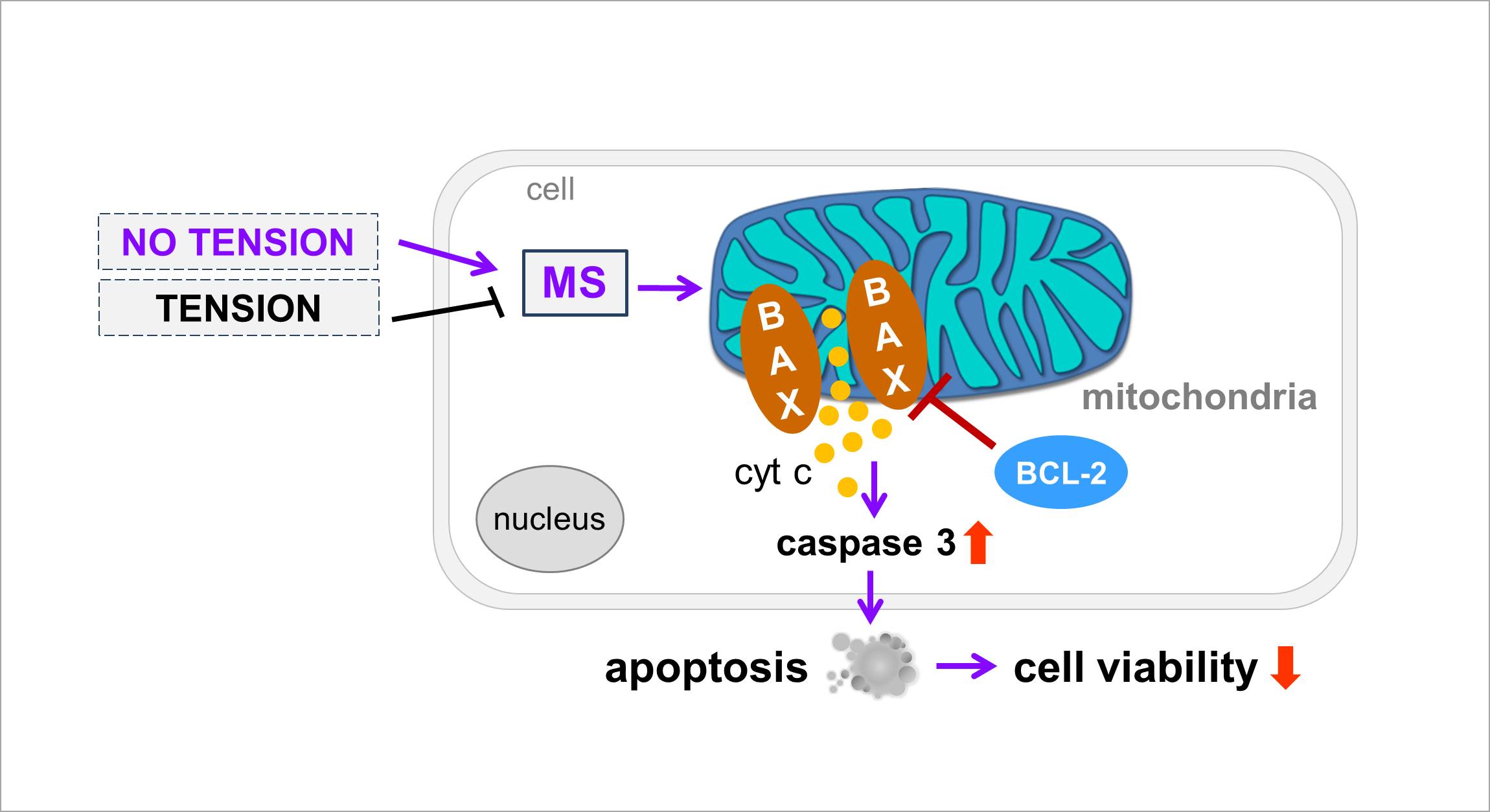Mitochondria and reactive oxygen species-mediated mechanisms of stem cell activation
The human amniotic membrane has been used for tissue regeneration applications for many decades. Vital amnion contains different cell populations, the human amniotic membrane mesenchymal stromal cells (hAMSC) and the human amniotic membrane epithelial cells (hAEC). These cells express markers of pluripotency, respond to signals in their microenvironment, and have the ability to differentiate into cells of all three germ layers, in vitro and in vivo. Inadequate storage of the tissue for clinical application can lead to rapid loss of cell viability and consequently loss of cell function. The aim of this project was to investigate the influence of tensile stress during storage on vitality/functionality of the cells in vital amnion. The results of our study show that there is a previously unknown tension-driven mitochondrial pathway, which may control amnion cell vitality by triggering mitochondrial-mediated apoptosis. This process begins with loss of tissue tension, followed by activation of the tension-driven mitochondrial signaling pathway, mitochondrial impairment, release of mitochondrial apoptotic factors, induction of caspase 3-mediated apoptosis, and loss of amniotic cell viability. In contrast, the presence of tissue tension extends the cell lifespan of the cells of the human amnion.
This study was conducted in cooperation with the Cell-based therapies group (head: Susanne Wolbank).
For detailed information see, for example, “Critical Impact of Human Amniotic Membrane Tension on Mitochondrial Function and Cell Viability In Vitro”, Poženel et. al, Cells. 2019 Dec 15;8(12):1641. doi: 10.3390/cells8121641. PMID: 31847452.
